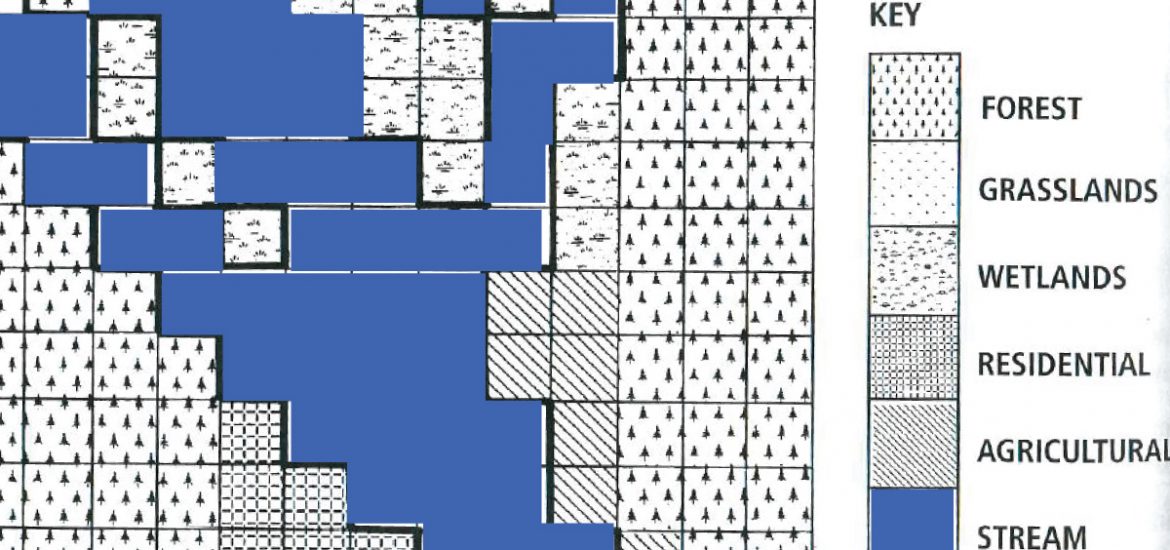By Kimberly Dedini, Anna Som, Mary Ann Sheridan, & Lisa Klar
Students will complete activities and then write and/or present an argument based on the work they completed in the lessons. The focus of our module is the watershed with each lesson melding technology, math, and science coupled with the same two Standards of Practice.
Watershed (6-8) Module Overview
- Preassessment
- Survey (10 minutes)
- Color Me a Watershed Survey
- Students take a survey that requires them to rank their ability to use concrete details to support an argument as well as their knowledge of writing an argumentative paragraph.
- Survey (10 minutes)
- Lesson # 1: Seeing Watersheds- Building Vocabulary (30 minutes)
- Color Me a Watershed Maps
- Color Me a Watershed Worksheet
- Objective #1: Students will locate the mainstem, tributaries, headwaters, mouth and boundaries of watersheds on simple maps.
- Objective #2: Students will characterize the movement of water in a watershed based on elevation changes.
- Objective #3: Students will record concrete details and observations into their lab journal that will help them complete the final assessment project.
- Lesson # 2: Color Me a Watershed- Part 1: Area of Land Coverage (2-45 minute periods)
- 2. Area of Land Coverage Table
- 2A. Color Me a Watershed Worksheet
- Objective #1: Students will recognize that population growth and settlement cause changes in land use.
- Objective #2: Students will utilize math concepts (ratios, percents,etc) to strengthen argument about changes due to population growth.
- Objective #3: Students will use sentence frames to increase their understanding that including CD’s will support/strengthen their argument/conclusions. See PowerPoint presentation on use of sentence frames.
- Objective #4: Students will continue to record concrete details and observations into their lab journal that will help them complete the final assessment project.
- Lesson # 2a: Color Me a Watershed- Part 2: Volume of Rain and Volume of Runoff (8th only) (45 minutes)
- Objective #1: Students will analyze how land use variations in a watershed can affect the runoff of water
- Objective #2: Students will use scientific notation to analyze and hypothesize this information.
- Objective #3: Students will continue to use sentence frames to increase their understanding that including CD’s will support/strengthen their argument/conclusions.
- Objective #4: Students will continue to record concrete details and observations into their lab journal that will help them complete the final assessment project.
- Watch video on urban watershed improvement: Miracle on Elmer Street
- Lesson # 3: Water Impairment (45 minutes)
- Objective #1: Students will read an article about impairments of watersheds. How are Watersheds impaired?
- Objective #2: Students will summarize the article into one argument paragraph in preparation for their final project – identify argument, CDs that support the argument, and conclusion.
- Objective #3: Students will continue to record concrete details and observations into their lab journal that will help them complete the final assessment project.
- Use QR Codes to jigsaw topics covered in article
- Notes on possible information to cover:
- Run-off-
- Graphs-local data
- Final Activity (2-45 minute periods)
- Look at historic and current data of local waterflows and discuss impact due to human usage of land and water. Refer back Color Me a Watershed lessons.
- 6th grade: written paragraph – choose one side or the other
- 7th grade: written paragraph or presentation
- 8th grade: menu of options for showcasing argument
- Look at historic and current data of local waterflows and discuss impact due to human usage of land and water. Refer back Color Me a Watershed lessons.
Additional Resources
- Al Gore “Our Choice” Ap – this is an app you have to purchase
- Color Me a Watershed Slideshow – Power Point
- Sentence Starters for Arguments
- Area of Land Coverage Table Worksheet
- Color Me A Watershed – Worksheet
- 6th grade Rubric (partial 7th/8th)
- Jr. Raindrops – 7.5 minute video

